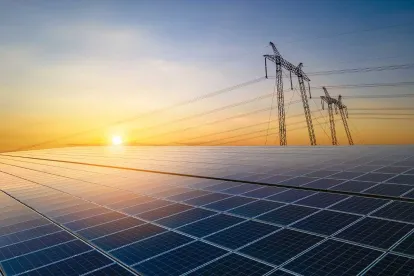On March 21, 2023, the US Department of Energy (DOE) released a series of reports aimed at advancing President Biden’s ambitious goal of achieving a decarbonized electricity sector by 2035 and net-zero emissions economy-wide by 2050. (See Executive Order 14057, Catalyzing Clean Energy Industries and Jobs Through Federal Sustainability, Dec. 8, 2021.) The reports come on the heels of the Intergovernmental Panel on Climate Change’s March 20, 2023, Synthesis Report for the Sixth Assessment Report, calling for urgent action on climate change.
As part of its “Pathways to Commercial Liftoff” initiative, DOE published three reports articulating its vision for the large-scale commercialization of advanced nuclear, clean hydrogen, and long-duration energy storage (LDES) technologies to create high quality domestic jobs, strengthen domestic supply chains and global competitiveness, and facilitate equitable energy transition. Spurred by the Infrastructure Investment and Jobs Act (IIJA),which provides funding to support investment in energy infrastructure, and the Inflation Reduction Act (IRA), which also provides funding and incentives to expedite the United States’ transition to a clean energy economy, DOE is poised to invest billions in the development and deployment of these technologies. As the agency explains, “[t]hese investments are intended to drive commercialization and unlock trillions in private investment over the same period, [and] set the nation on a course to hit critical long-term decarbonization objectives.” DOE considers the reports “living documents” that will be periodically updated, with each focusing on a single carbon-free technology. The reports discuss the current state of the technology, pathways to large-scale commercialization, and potential challenges.
Advanced Nuclear Liftoff Report
The Advanced Nuclear Liftoff Report suggests that 200 gigawatts (GW) of firm, dispatchable, nuclear technology could advance the Biden Administration’s 2050 net-zero emissions goal. This would involve deploying nuclear technology by 2030 and increasing annual deployment to 13 GW by 2040. 200 GW constitutes a significant chunk of the pie, considering that various power system modeling data suggest that the United States will need 550–770 GW of additional clean, firm capacity to reach net-zero. Advanced nuclear technology is particularly appealing because it generates carbon-free electricity, provides firm dispatchable power that complements renewables, and has low land-use and transmission requirements.
DOE believes that the path to commercialization would require signed commitments for 5-10 deployments of at least one reactor design by 2025 “to catalyze commercial liftoff in the U.S.” DOE projects that implementing new nuclear technology could inject $90-100 million to the economy, add 140,000 jobs by 2030, and revive shuttered facilities that were previously involved in the production of materials critical for the enrichment of uranium. A notable challenge, however, to bringing advanced nuclear technology to the mainstream is the lack of buy-in from utility companies who are concerned about the cost of deployment and the prospect of rate recovery. DOE suggests that pooling demand with a consortium of utility companies could provide an effective solution.
Hydrogen Liftoff Report
The Hydrogen Liftoff Report notes that conditions are ripe for the rapid expansion of clean hydrogen, especially considering DOE’s Hydrogen Hub funding program, the hydrogen production tax credit provided under the IRA, and DOE’s Hydrogen Earth Shot program, which are all aimed at reducing the cost of clean hydrogen technology. Based on these initiatives, DOE expects current and announced hydrogen projects to meet 2030 demand.
DOE considers hydrogen as a critical decarbonization tool that could reduce global CO2 emissions by 10-20 percent in sectors with the fewest decarbonization options (e.g., transportation, steel). The report identifies pathways for commercialization along the hydrogen value chain that would meet 2050 decarbonization goals. For upstream uses, DOE notes that currently “most domestic hydrogen is produced through carbon-intensive reformation-based approaches without carbon capture options.” However, there are multiple pathways for upstream production to produce clean hydrogen, including via carbon capture and sequestration and water electrolysis. Midstream hydrogen distribution and storage infrastructure currently rely on dedicated hydrogen pipelines and three salt caverns for storage. While these dedicated facilities are critical to securing long-term hydrogen infrastructure, DOE recommends “more modular solutions,” such as gaseous or liquid trucking, to transport hydrogen in lower volumes. Indeed, the data indicates that pipelines, which are ideal for large volume transportation, are unlikely to be needed until 2030 “when offtake scales.” As for downstream end-uses, DOE states that hydrogen can decarbonize numerous sectors, especially when decarbonization alternatives are expensive or impractical. The report also highlights key dynamics that could impact hydrogen reaching commercial scale, including that “favorable supply-side dynamics will be insufficient to scale the market, unless current chicken-and-egg challenges between scaling midstream infrastructure and end-use applications are also addressed.”
LDES Liftoff Report
DOE recognizes LDES, particularly inter-day and multi-day/week LDES, as a flexible and reliable option in a decarbonized power system given its potential to store energy for a long time for future dispatch. It projects that the national power grid will need 225-460 GW of LDES for a net zero economy by 2060, which would require $330 billion in cumulative capital. Although this represents a significant initial investment, DOE suggests that the LDES net-zero pathways identified will “result in $10-20B in annualized savings in operating costs and avoided capital expenditures compared to pathways that do not (by 2050).” DOE modeled various scenarios to evaluate the commercial feasibility of LDES and contends that adherence to the pathways proposed in the liftoff report could provide the least-cost option while providing stability on the grid as renewables are integrated. In fact, DOE declares that LDES “could be the best solution to improve local and regional resiliency with increasing frequency of extreme-weather events while also reducing the cost and risks around grid expansion.”
But, to meet these goals, LDES must “achieve a technology ‘liftoff’.” This requires improvements in technology, cost declines, regulatory support, and supply chain development by 2030-2035. Specifically, LDES will need substantial capital, attracting at least $9-12 billion in investment before 2030. And, to scale up in a net-zero context, LDES will need $230-335 billion of investment capital from 2023 to 2050. Moreover, DOE recommends “[e]arly public and private investment support in commercial-scale project demonstration and deployment … to generate the economies of scale and manufacturing improvements that will drive further improvement in LDES.” By 2028-2030, cost should be reduced by 45-55 percent in comparison to the costs reported by leading technologies today, and the performance and working lifetime of LDES must also improve. DOE recommends support from the federal government through the provision of grants and loans for projects, modeling tools, and valuation frameworks for regulators and commercial customers and the development of transparency tools on technology cost and performance for investors, regulators, and policymakers.
Conclusion
The reports provide a roadmap for accelerating the commercialization of clean energy technologies to reach net-zero emissions by 2050. While significant efforts are already underway to accomplish this goal, the reports are clear that much more is required. “Liftoff” will require multi-stakeholder coordination, significant capital investments in each type of technology, additional funding programs from the federal government, and continued regulatory support.
Michelle-Ann C. Williams also authored this article.




 />i
/>i
